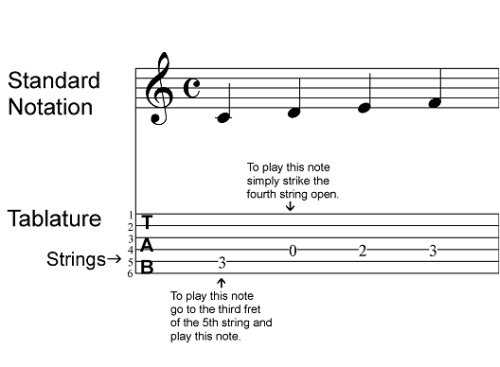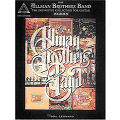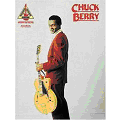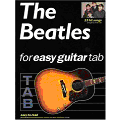I will never forget my first experience with sheet music.
After playing guitar for about two weeks, I went out and bought my first songbook.
I raced home very, very, excited. The trip home seemed to take forever.
When I finally got home, I threw my jacket on the bed, grabbed my guitar, turned on the amp, stomped on my distortion pedal, and opened up the songbook. In case you’re curious, it was for Van Halen’s first album.
I started to play the first song, but the chords didn’t sound quite right. In fact, they didn’t sound very much like the song at all.
I picked another song. I started to play it, but it didn’t sound even close to the song.
I tried a third, a fourth and then a fifth song. Some sounded closer than others, but none of the songs sounded exact. I wondered if it was just me?
Could it be that I wasn’t reading the sheet music correct? Next I put on the recording and tried to play along…not even close!
What Was Happening Here?
I had unknowingly bought a piano arrangement for my favourite guitar songs. The piano arrangements did not use the correct guitar chords and weren’t even in the right keys!
You Don’t Need to Repeat My Mistake
So how can you be sure to buy the right kind of sheet music? Once you know what to look for it’s actually pretty easy.
How to Buy Guitar Sheet Music
Guitar music comes in two broad categories. You can get individual songs in sheet music or collections of sheet music in songbooks or folios.
There are thousands of songbooks to choose from. You will find everything from individual albums, complete sets that cover everything ever done by an artist, to “best of” songbooks.
Also available are the “various artists” songbooks that cover a wide selection of groups within a single style of music. And just in case that’s not enough, there are also songbooks that cover the most popular music on a decade-by-decade basis.
The point is that there is a wide variety of music to choose from so you will probably find that your toughest choice is trying to decide which music you want the most.
Step 1 Answer This Question or You Could End Up Wasting Your Money
Would you like to learn a basic arrangement to the song so that you can just strum along? Or are you interested in learning to play a song note-for-note? By note-for-note I mean being able to play every guitar part. This means all the chords, riffs, and the guitar solo.
If you just want to strum along but get one of the complete note-for-note songbooks, you may get a bit intimidated by the level of detail in the music. The songs may look like there is way too much to learn. If you are just going to strum along, a simple arrangement is probably all you will need.
Conversely, if you want to learn all the guitar parts and you get a simple arrangement, you will be very disappointed. Simple arrangements give you the basic chords with no fills or guitar solos. Sometimes these aren’t even in the right key!
Okay, so now that you have decided between the basic strum-along type of sheet music and the note-for-note type, you are ready to begin your search.
Step 2 Look for Music You Want to Play
You can get sheet music and songbooks from many, many places.
Your local music store is probably a good choice for you. You should also be aware that some independent bookstores stock songbooks. Other options include used bookstores, and the big box book retailers.
I would recommend that you begin your search online—this way you will be able to see all of your options. Most of the brick and mortar stores also have websites you can buy sheet music from. I would recommend that you check out Amazon.com. It has a great selection of songbooks and sheet music. Here is a link for tab books I’ve already done for you:
Step 3 Select the Appropriate Songbook
Once you have found a songbook you are interested in, the first thing you need to do is see if it will meet your requirements.
If You Want to Learn the Songs Note-for-Note…
If you want to learn to play songs note-for-note, your first step is to see if the songbook contains tab (tablature). If it does, then chances are good that the song was transcribed by a guitarist. This is very important. If the song was transcribed by another musician, it is quite likely that the chord voicings won’t be accurate and you usually won’t find the guitar licks, riffs, fills and solos notated.
Tablature, or tab as it is also known, is a really easy way to learn guitar music. In tablature each horizontal line represents a string. A number on a string indicates the fret that you need to place a finger on. It’s as simple as that. This means that you can easily translate the notes from a song onto the neck of your guitar.

If you need to learn more about how to read tab check out these posts:
Play Guitar – How to Read Guitar Tab Part 1
Play Guitar- How to Read Guitar Tab Part 2
Beware of…
If you see that the book says “piano/vocal/guitar” or “piano/vocal/chords” you will usually find that a pianist performed the transcription. In the piano/vocal/guitar transcriptions (no tab), the transcriber works out the basic harmony (chords), or sometimes the exact harmony for the song, and then simply writes in basic fretboard diagrams for the guitar chords. This means that the chords shown in this type of transcription usually are not exactly what are performed. Also, as I mentioned earlier, the guitar solos and fills won’t be shown.
So How Do You Know If a Song Contains Tab?
It’s usually pretty easy to figure this out. Music publishers know that songs that are arranged in tab sell well, so they will usually make it really easy on you. All you need to do is look at the cover and or the title of the book. About 95% of the tab songbooks on the market today will indicate that they contain tab right on the front cover and usually in the title as well.
Let’s take a look at some examples:

As you can see from the title of this book (Acoustic Guitar Tab White Pages), it contains tab. If you want note-for-note transcriptions this would be a good choice.

The Ultimate Classic Rock Showstoppers is not a tab book. It’s probably a bit hard to see but in the top right-hand corner of the cover is “piano/vocal/chords”. As mentioned earlier, the “piano/vocal/guitar” and the “piano/vocal/chords” songbooks don’t contain tab and don’t show all of the guitar parts. You will usually get only the basic chords, not the actual guitar chords used. Since in this case you are looking for exact transcriptions this would not be your best choice.

Queen Deluxe Anthology. No mention of tab on the cover or in the title. This songbook is really for piano.

The title of this book is “The Allman Brothers Band: The Definitive Collection for Guitar”. When a book says that it is specifically for the guitar, you can usually assume that it will be note-for-note tab. The top left-hand corner gives you the “guitar recorded versions” logo so you know for sure that it is in tab and gives you all of the guitar parts.

Chuck Berry (Guitar Recorded Versions). As you can guess by the title, this book contains tab and will give you each song note-for-note.
If You Want to Just Strum Along…
If you just want to strum along with songs you have lots of choices. In fact, you can get just about any type of songbook. The “piano/vocal/guitar” and the “piano/vocal/chords” songbooks are fine to strum along with. The only thing to be aware of is that sometimes the songs may be in different keys and the chord fingerings are usually simplified. This means that if you put on the CD/mp3 and try to strum along, you might be disappointed.
You can also find guitar tab books that have been deliberately simplified. These books will show you how to strum along and give you the basic riffs, but generally no guitar solos. Since these are arranged for guitar they will usually be in the correct keys and will use the correct guitar chords (or simplified chords that sound similar).

As you can see by the “easy guitar tab” in the title, the Beatles book contains guitar tab and the “easy” qualifier means that the songs have been simplified.

Above is another example of an easy guitar tab book. Again you won’t find the solos but you will find the basics of the songs.
If you just want to strum along, you can certainly get the complete note-for-note guitar transcriptions. They can be something that you work up to as your playing improves. Basically you would first just look at the chord voicings (fingerings) in the songs and then strum along. When you are ready, you could back track and start to learn all of the guitar parts.
3 Other Sources of Guitar Sheet Music
Fake Books
As you can guess by the title, fake books will show you the basic chord progressions and the melody line. No guitar solos or fills are shown. The arrangements may also be in different keys. If you are just interested in strumming along with lots and lots of songs, then this would be a good choice. But, if you want to play songs note-for-note then you’ll be disappointed with fake books.
Guitar Magazines
Guitar magazines are a great source for accurate guitar tab. I would highly recommend that you look at these magazines each month. You won’t have to look too hard to find some great songs you can learn.
There are actually quite a few guitar magazines available. Most music stores carry guitar magazines. Here are some of the guitar magazines I find most helpful for my guitar students:
Also, your corner variety store may carry some of the best selling guitar magazines, but for better selection, you should check out the big box bookstores. Most of them have pretty much all of the guitar magazines—even the imports.
Guitar Tab Sites
Finally, you have the tab sites on the Internet. Some of the “free tab” you can find on the net is quite good, but unfortunately a lot of it is wrong. I’m sure you don’t want to waste your time trying to learn a song only to discover later that the tab is all wrong.
Remember, anyone can put up a website. This means that someone who has only played guitar for a month could have done the tab you are about to learn! So I would recommend getting started with the real, professionally published songbooks. Yes there are still sometimes errors in the professionally published books—no one is perfect—but the errors are considerably less than what you find in the free tab. Once you have been playing for a while you may want to start to explore some of the free tablature.
A Quick Recap
To recap, if you want to learn exactly how to play a song, get a tab edition of the song. You will want to make sure that it says “note-for-note”, “as recorded”, “guitar recorded versions”, “guitar/vocal with tab”, “play it like it is”, “authentic guitar-tab” or “as performed”, etc. If you just want to strum along, then the simplified versions will be fine. The simplified versions will usually say “easy version”, “ez play”, “easy tab”, “easy guitar”, etc.
Well there you go. You now know what to look for in guitar tab. If you are looking for great way to learn guitar from scratch check out:










Pingback: An Enlightened Guitar Lesson for Guitar Song Writers and Composers Part 1 | Guitar Accelerator Blog: Play Guitar - Electric and Acoustic Guitar Lessons
Pingback: 10 Tips to Learn Guitar on Your Own Part 2 | Guitar Accelerator Blog: Play Guitar - Electric and Acoustic Guitar Lessons